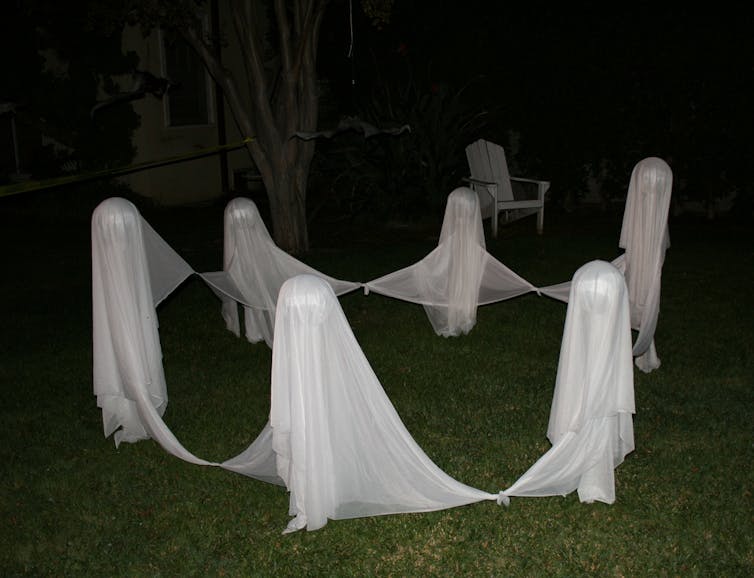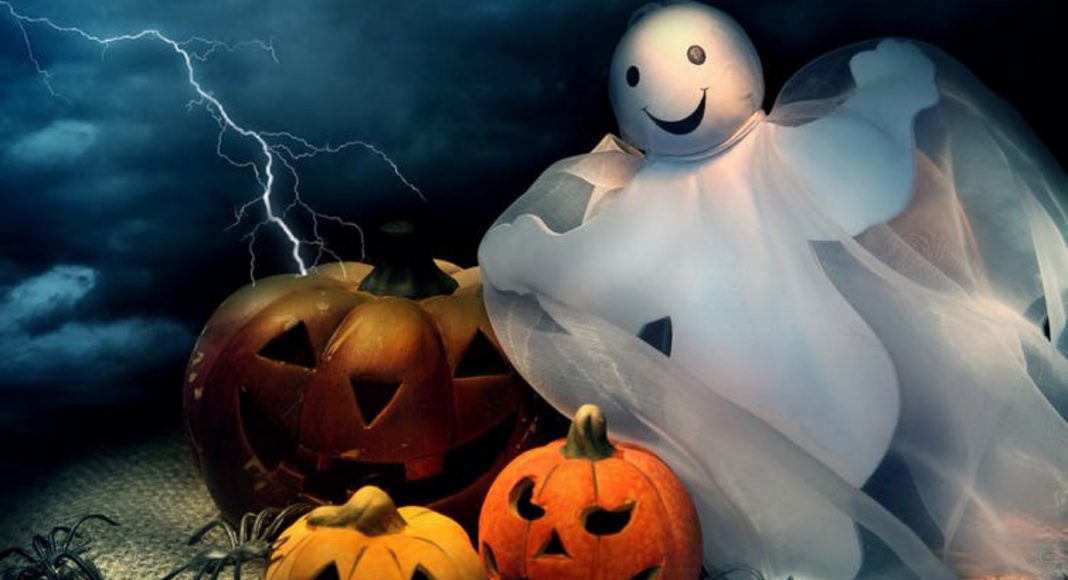Halloween is a time when ghosts and spooky decorations are on public display, reminding us of the realm of the dead. But could they also be instructing us in important lessons on how to lead moral lives? Here is how believing in ghosts can make you a better person.
Roots of Halloween
The origins of modern-day Halloween go back to “samhain,” a Celtic celebration for the beginning of the dark half of the year when, it was widely believed, the realm between the living and the dead overlapped and ghosts could be commonly encountered.
In 601 A.D., to help his drive to Christianize northern Europe, Pope Gregory I directed missionaries not to stop pagan celebrations, but rather to Christianize them.
Accordingly, over time, the celebrations of samhain became All Souls’ Day and All Saint’s Day, when speaking with the dead was considered religiously appropriate. All Saint’s Day was also known as All Hallows’ Day and the night before became All Hallows’ Evening, or “Hallowe’en.”
Christian ghosts
Not only did the pagan beliefs around spirits of the dead continue, but they also became part of many of early church practices.
Pope Gregory I himself suggested that people seeing ghosts should say masses for them. The dead, in this view, might require help from the living to make their journey towards Heaven.
During the Middle Ages, beliefs around souls trapped in purgatory led to the church’s increasing practice of selling indulgences – payments to the church to reduce penalties for sins. The widespread belief in ghosts turned the sale of indulgences into a lucrative practice for the church.
RELATED: 5 Scariest TV Show Episodes To Watch This Halloween
It was such beliefs that contributed to the Reformation, the division of Christianity into Protestantism and Catholicism led by German theologian Martin Luther. Indeed, Luther’s “95 Theses,” that he nailed to the All Saints Church in Wittenburg on Oct. 31, 1517, was largely a protest against the selling of indulgences.
Subsequently, ghosts became identified with “Catholic superstitions” in Protestant countries.
Debates, however, continued about the existence of ghosts and people increasingly turned to science to deal with the issue. By the 19th century, Spiritualism, a new movement which claimed that the dead could converse with the living, was fast becoming mainstream, and featured popular techniques such as seances, the ouija board, spirit photography and the like.
Although Spiritualism faded in cultural importance after World War I, many of its approaches can be seen in the “ghost hunters” of today, who often seek to prove the existence of ghosts using scientific techniques.
A wide, wide world of ghosts
These beliefs are not just part of the Christian world. Most, although not all, societies have a concept of “ghosts.” In Taiwan, for example, about 90 percent people report seeing ghosts.

Along with many Asian countries such as Japan, Korea, China and Vietnam, Taiwan celebrates a “Ghost Month,” which includes a central “Ghost Day,” when ghosts are believed to freely roam the world of the living. These festivals and beliefs are often tied to the Buddhist story of the Urabon Sutra, where Buddha instructs a young priest on how to help his mother whom he sees suffering as a “hungry ghost.”
RELATED: Is Jason Voorhees A Marijuana Farmer In ‘Friday The 13th’?
As in many traditions, Taiwanese ghosts are seen either as “friendly” or “unfriendly.” The “friendly” ghosts are commonly ancestral or familial and welcomed into the home during the ghost festival. The “unfriendly” ghosts are those angry or “hungry” ghosts that haunt the living.
Role of ghosts in our lives
As a scholar who has studied and taught ghost stories for many years, I have found that ghosts generally haunt for good reasons. These could range from unsolved murders, lack of proper funerals, forced suicides, preventable tragedies and other ethical failures.
Ghosts, in this light, are often found seeking justice from beyond the grave. They could make such demands from individuals, or from societies as a whole. For example, in the U.S., sightings have been reported of African-American slaves and murdered Native Americans. Scholar Elizabeth Tucker details many of these reported sightings on university campuses, often tied in with sordid aspects of the campus’s past.

In this way, ghosts reveal the shadow side of ethics. Their sightings are often a reminder that ethics and morality transcend our lives and that ethical lapses can carry a heavy spiritual burden.
Yet ghost stories are also hopeful. In suggesting a life after death, they offer a chance to be in contact with those that have passed and therefore a chance for redemption – a way to atone for past wrongs.
This Halloween, along with the shrieks and shtick, you may want to take a few minutes to appreciate the role of ghosts in our haunted pasts and how they guide us to lead moral and ethical lives.![]()
Tok Thompson, Associate Professor of Teaching, University of Southern California – Dornsife College of Letters, Arts and Sciences
This article is republished from The Conversation under a Creative Commons license. Read the original article.


